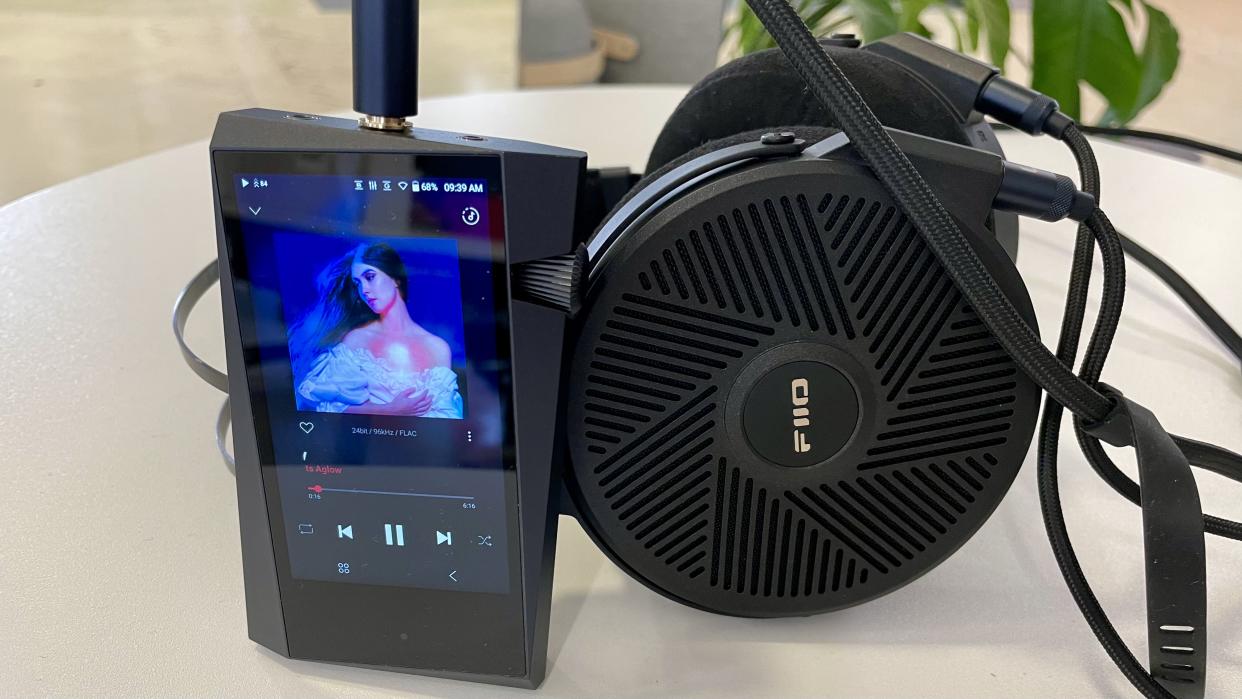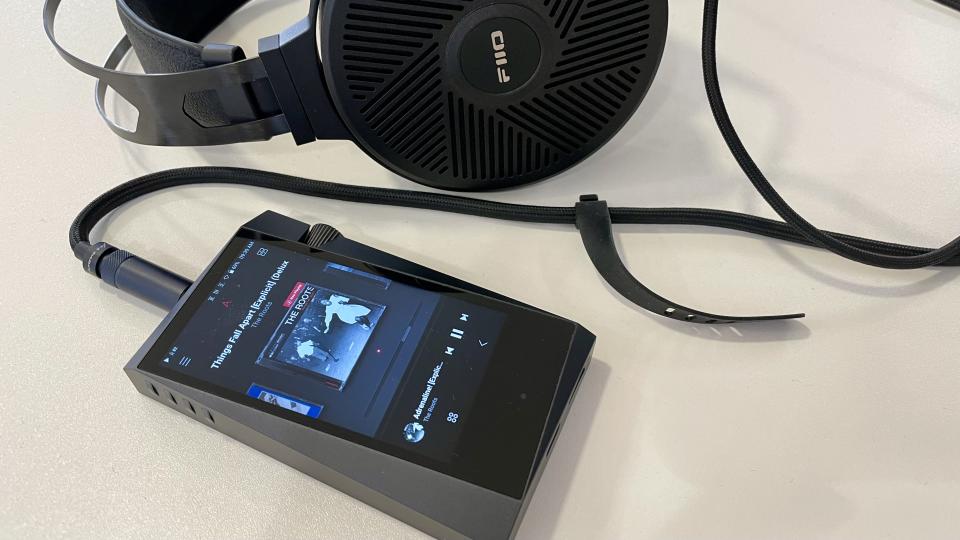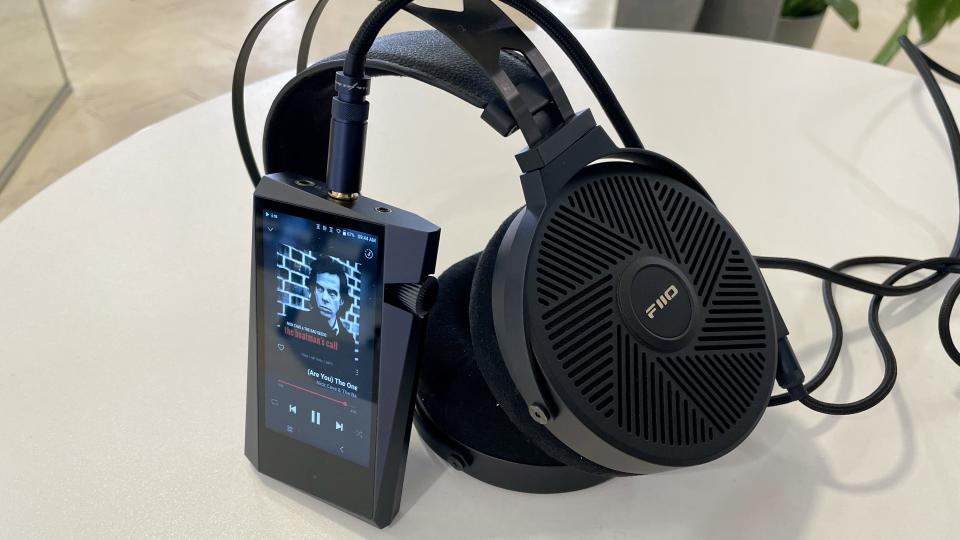Getting into hi-res audio? This is the hi-res player and headphones I recommend

Hi-res audio can be a cruel mistress. You'd be forgiven for thinking two five-star products joined in union will surely bring high fidelity sound to your ears, but, as anyone who's connected a set of high-impedance IEMs to a hi-res DAP (even if it's one of the best portable audio players hooked up to some of the best wired headphones) knows, it's just not that simple.
Why? Because said player may not have the oomph or power to fire up your earphones' multiple drivers to their full potential, that's why. And that means you'll need a separate headphone amp (often bundled in with some of the best portable DACs), which may affect the sonic characteristics of your chosen player's onboard digital-analog-converter.
And aside from all of this, headphones are tuned specifically by audio engineers (often to reflect the sonic recipe a brand is known for) and said audio curve may not work as beautifully with your player's presentation as you might hope.
In hi-fi as in life, compatibility is key. And that's why I want you to know about this little system. It surprised me, in all the right ways.
First off, I decided to start with a set of very big and rather new headphones, namely the December 2023-issue FiiO FT5, also known as FiiO's first ever planar magnetic design. Why did they set my internal alarm bells ringing – and why might such a product be a tough match for any pocket player? Each ear cup uses a large and extraordinarily thin (6µm) planar magnetic driver, with 11 neodymium magnets on one side and nine on the other. Sounds tough to drive, no? And because these headphones are priced at $449 / £429 / AU$799, (a level at which PM designs aren't unheard of, but the more practical dynamic driver alternative still dominates) coupled with the fact that this is FiiO's first stab at a planar magnetic design, I worried sensitivity would be an issue.
On top of all of that, I plugged their 4.4mm balanced output into Astell & Kern's most 'entry-level' player, the Astell & Kern A&norma SR35. I put the term in quotation marks because using it at all requires you to consider $799 / £799 / AU$1,299 a negligible fee – and I cannot do that. No, not even when A&K's flagship player (the Astell & Kern A&ultima SP3000 costs $3,699 / £3,799 / AU$5,499, thank you…
Doubt the talents of this A&K x FiiO pairing at your peril

So, we know that these cans are big and we know that they use a flat 90mm diaphragm, rather than the traditional cone-shaped one. Because this is sandwiched between a total of 20 magnets to create a diaphragm evenly-suspended between permanent magnetic fields, it should make the sound far more resistant to myriad audio and electronic distortions – so better music – but only if the player can power it properly, to celebrate the resolution of those lossless FLAC files.
And oh, the Astell & Kern A&norma SR35 can. I hadn't expected it, and I was wrong to doubt either brand.
A&K's stone cold serious spec-sheet should have been enough, really, but plenty of brands promise strength and zeal from their players even when they're tasked with hard-to-drive headphones and sadly, I've been disappointed in the past.
But not here. This partnership is one of the best I've stumbled upon and it is without doubt my top shout for a portable system costing $1,248 / £1,228 / AU$2,098.
As noted above, the A&norma SR35 isn't your average ‘entry level’ player. Astell & Kern is a specialist that regularly lists digital audio players costing the better part of four large in its oeuvre, and this particular player certainly exceeds my expectations of a DAP listed alongside the term.
Tempted? Good, the audiophile in you deserves it

I've listened to FiiO's novel new over-ears with A&K's cheapest player for hours (turning into days), and for this money, I cannot suggest a portable solution that could come close to bettering it – and that's not a statement I make flippantly.
The Weeknd's Blinding Lights is every bit as vivacious, cutting, textured and punchy as you could hope to enjoy at the level. The Rolling Stones Gimme Shelter is raucous, emotive, foot-tappingly accurate timing-wise and above all, meaningfully immersive. When the beat drops in Peter Gabriel's Sledgehammer, you know about it and then some.
The SR35's amplification (the key component in this partnership) comes from a recent A&K in-house design called ‘New Generation AMP’. Digital-to-analogue conversion is handled by not one, not two, but four Cirrus Logic CS43198 DAC chips – and it can even run in ‘dual-DAC’ mode instead, to extend the battery performance. It's all part of Astell & Kern’s ‘Teraton Alpha’ hardware platform and the choice morsel of intel you need here is that while it's featured in Astell & Kern players before, it has been reserved for the much more expensive ones until now – namely, the firm's A&futura and A&ultima lines.
With the A&norma SR35, I now get to combine my oversized FiiO cans with A&K's 2-step gain mode – yes, I get to select 'normal' or 'high' gain modes depending on my power needs. You see, the output claim for the SR35 is 6 Vrms from its balanced connections – and that's huge. If your main issue with DAPs to date has been power (ie. enough to drive your beloved over-ear headphones) the extra fuel injection between the SR35 and the already-much-better A&norma SR25 MKII is significant. The SR35 drives the FiiO FT5 with energy to spare. I never need to go above 60% volume – or, to put it another way, 89 of the SR35's 0 to 150 on its 0.5 dB incremental volume wheel is plenty.
Will the battery life suffer with this little setup? A little, despite the improved efficiency. You should expect to take a slight hit on the 20 hours or so of playback you'll get using dynamic driver headphones at 50% volume – but then again, using a Bluetooth connection to wireless cans also means taking a hit on stamina, and I know which I prefer.
I appreciate that it's not an insubstantial amount of money. But I also maintain that these two products in partnership are worth it, because in my honest opinion the sound outperforms the investment considerably.

